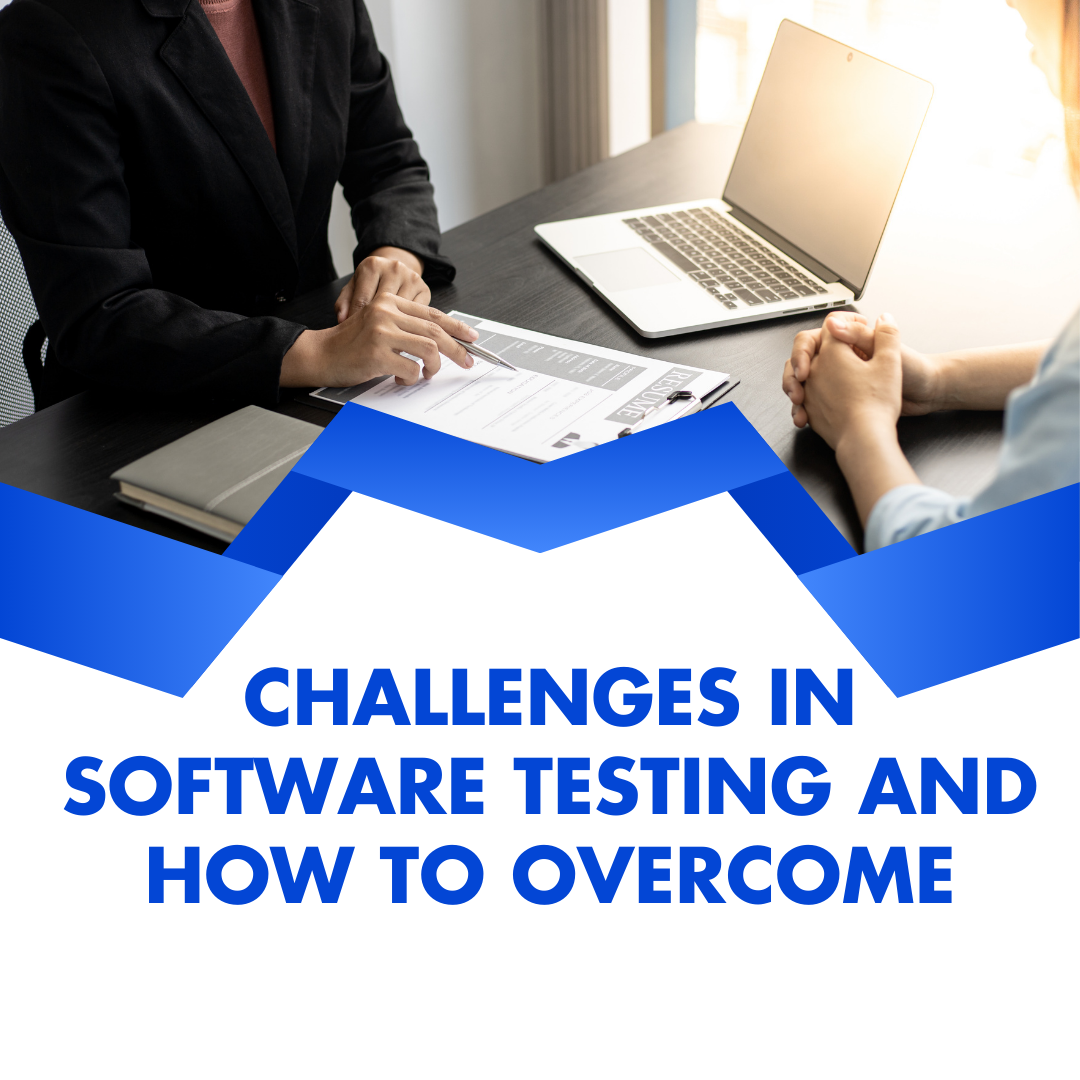Software testing is essential for ensuring the quality and reliability of software products, but it also presents its own challenges. These challenges can lead to delays, increased costs, and sometimes poor-quality software if not handled properly. In this article, we’ll explore some of the common challenges in software testing and how to overcome them.
1. Lack of Requirements Clarity
Challenge:
One of the most common problems in software testing is the lack of clear and well-defined requirements. When the requirements are ambiguous or constantly changing, it becomes difficult for testers to understand what they need to test and how to test it effectively. This leads to incomplete test coverage and missing crucial bugs.
How to Overcome:
- Collaborate with stakeholders: Ensure continuous communication between testers, developers, and business stakeholders to clarify unclear requirements.
- Use Requirement Traceability Matrix (RTM): RTM helps map the test cases to the requirements, ensuring full test coverage and helping teams keep track of requirement changes.
- Review requirements early: Conduct frequent reviews and analysis sessions to clarify any unclear points before the testing phase begins.
2. Insufficient Time for Testing
Challenge:
Time constraints are a significant challenge in software testing. Due to tight deadlines, the testing phase often gets compressed, leaving little room to perform thorough testing. This results in rushed test cases and potential bugs being missed.
How to Overcome:
- Prioritize test cases: Focus on testing high-risk areas and critical features first. Implement risk-based testing where the most crucial parts of the application get more testing attention.
- Automate repetitive tests: Automation can significantly reduce the time spent on repetitive or regression testing, allowing testers to focus on more complex areas.
- Start testing early: Shift-left testing (starting testing activities early in the development cycle) can help identify and fix bugs sooner, reducing the pressure at the end of the project.
3. Managing Test Data
Challenge:
Managing and preparing test data is often time-consuming and difficult, especially in large systems with complex databases. Testers struggle to ensure that the test data is relevant, accurate, and realistic, which is crucial for testing effectiveness.
How to Overcome:
- Use test data management tools: Leverage specialized test data management tools to generate and manage realistic test data.
- Anonymize production data: Where possible and secure, anonymize production data to use for testing purposes.
- Automate data generation: Create automated scripts to generate test data dynamically, reducing manual effort and ensuring consistency.
4. Dealing with Regression Testing
Challenge:
As software evolves, new features are added, and bugs are fixed, but this can introduce new issues into previously working areas. Regression testing is essential but can become repetitive and time-consuming, especially as the application grows in complexity.
How to Overcome:
- Automate regression tests: Automation is key for regression testing. By automating repetitive regression tests, you can save time and reduce the chances of human error.
- Use continuous integration (CI): CI systems can automatically run regression tests every time code changes are made, ensuring bugs are caught early.
- Maintain a regression suite: Regularly update your regression suite to ensure it covers all critical functionalities, including newly added features.
5. Communication Gaps Between Teams
Challenge:
Miscommunication between the development, testing, and business teams can cause delays, incorrect testing focus, or missed requirements. This challenge often arises due to a lack of documentation, inconsistent terminologies, or misunderstanding of goals.
How to Overcome:
- Foster collaboration: Encourage frequent communication and collaboration among teams using regular meetings or collaborative tools like Slack or Jira.
- Use clear documentation: Ensure that all teams use the same terminology and document expectations, goals, and processes clearly.
- Adopt Agile methodology: Agile encourages collaboration through regular stand-ups, sprint planning, and retrospective meetings, ensuring everyone is on the same page.
6. Testing in Multiple Environments
Challenge:
Testing across multiple environments (such as development, staging, and production) can introduce challenges, as configurations, hardware, or software may differ across environments. Bugs that appear in one environment may not appear in others, making it hard to ensure consistency.
How to Overcome:
- Virtualization and containerization: Use virtualization or containerization technologies like Docker to replicate consistent environments across development, testing, and production.
- Test in production-like environments: Ensure that the testing environment closely mirrors the production environment in terms of configuration and infrastructure.
- Use environment management tools: Tools like Kubernetes or Terraform can help automate and manage environment configurations, ensuring uniformity across all environments.
7. Dealing with Test Automation Challenges
Challenge:
While test automation is critical for handling repetitive tasks, setting up and maintaining automated tests can be challenging. Poorly designed automation frameworks can lead to flaky tests, high maintenance costs, and unreliable test results.
How to Overcome:
- Start small and build: Begin automating a small number of high-value test cases, then scale up as you refine your automation strategy.
- Choose the right tools: Select the right automation tools that fit your project’s needs, such as Selenium for web applications or Appium for mobile apps.
- Continuous maintenance: Ensure that your automation suite is regularly updated as the application evolves, fixing any broken or outdated tests to keep them relevant.
8. Testing for Security
Challenge:
Security testing is often overlooked or left until the end of the development process. However, failing to address security vulnerabilities can lead to serious breaches and compromises in user data.
How to Overcome:
- Shift security testing left: Integrate security testing early in the development process using static code analysis and automated security testing tools.
- Use penetration testing: Regularly perform penetration testing to simulate real-world attacks and uncover vulnerabilities.
- Implement security best practices: Ensure developers follow secure coding practices, reducing vulnerabilities before they reach the testing stage.
9. Lack of Skilled Testers
Challenge:
As technologies evolve, so do testing tools and methodologies. However, finding skilled testers with expertise in automation, performance testing, and security testing can be difficult.
How to Overcome:
- Invest in continuous learning: Encourage and support your testing team to continuously upgrade their skills by attending training, workshops, or earning certifications.
- Hire specialized testers: Consider hiring testers with specific expertise in areas such as automation or security testing to fill the skill gaps in your team.
- Pair with developers: Pair testers with developers to enhance their understanding of the code and improve their ability to design effective test cases.
10. Performance Testing
Challenge:
Testing the performance of an application under various loads and stress conditions is challenging but essential, especially for high-traffic applications. However, replicating real-world traffic patterns and environments can be difficult.
How to Overcome:
- Use performance testing tools: Tools like JMeter or LoadRunner can simulate thousands of users and monitor how the system performs under load.
- Monitor in real-time: Use performance monitoring tools during testing to analyze system behavior, bottlenecks, and performance degradation in real-time.
- Test early and often: Conduct performance testing regularly throughout the development cycle to identify performance issues before they affect users.
11. Continuous Integration and Continuous Delivery (CI/CD) Challenges
Challenge:
Integrating testing into CI/CD pipelines can be challenging, especially when dealing with large, complex systems. Ensuring that tests are run automatically and consistently as code is integrated and delivered is key, but misconfigurations or test failures can disrupt the pipeline.
How to Overcome:
- Automate test execution: Set up automatic test execution in your CI/CD pipeline to ensure consistent and repeatable test runs.
- Use proper test selection strategies: Implement techniques such as test parallelization and dynamic test selection to optimize the CI/CD pipeline and prevent slowdowns.
- Monitor pipeline performance: Regularly review and optimize the CI/CD pipeline to ensure that tests run efficiently without introducing bottlenecks.
12. Testing Across Devices and Platforms
Challenge:
With the increasing number of devices, browsers, and platforms, ensuring that an application works seamlessly across all of them can be challenging.
How to Overcome:
- Use cross-browser testing tools: Tools like BrowserStack or Sauce Labs allow testers to run tests across different browsers and devices automatically.
- Test responsive designs: Ensure that your application works across various screen sizes and resolutions by testing with real devices and emulators.
- Prioritize popular platforms: Identify the most widely used platforms and prioritize testing on those first, expanding to less popular platforms as time permits.
Conclusion
Software testing is a vital aspect of the software development process, but it is not without its challenges. By identifying these common challenges and applying strategies to overcome them—such as automating repetitive tasks, collaborating closely with stakeholders, and using modern tools and technologies—organisations can ensure the delivery of high-quality software products. For those looking to build expertise in this field, an Online Software Testing Course in Noida, Delhi, Mumbai, Indore, and other parts of India can provide essential skills. Addressing these challenges effectively not only improves the quality of the software but also boosts team productivity and project success.




